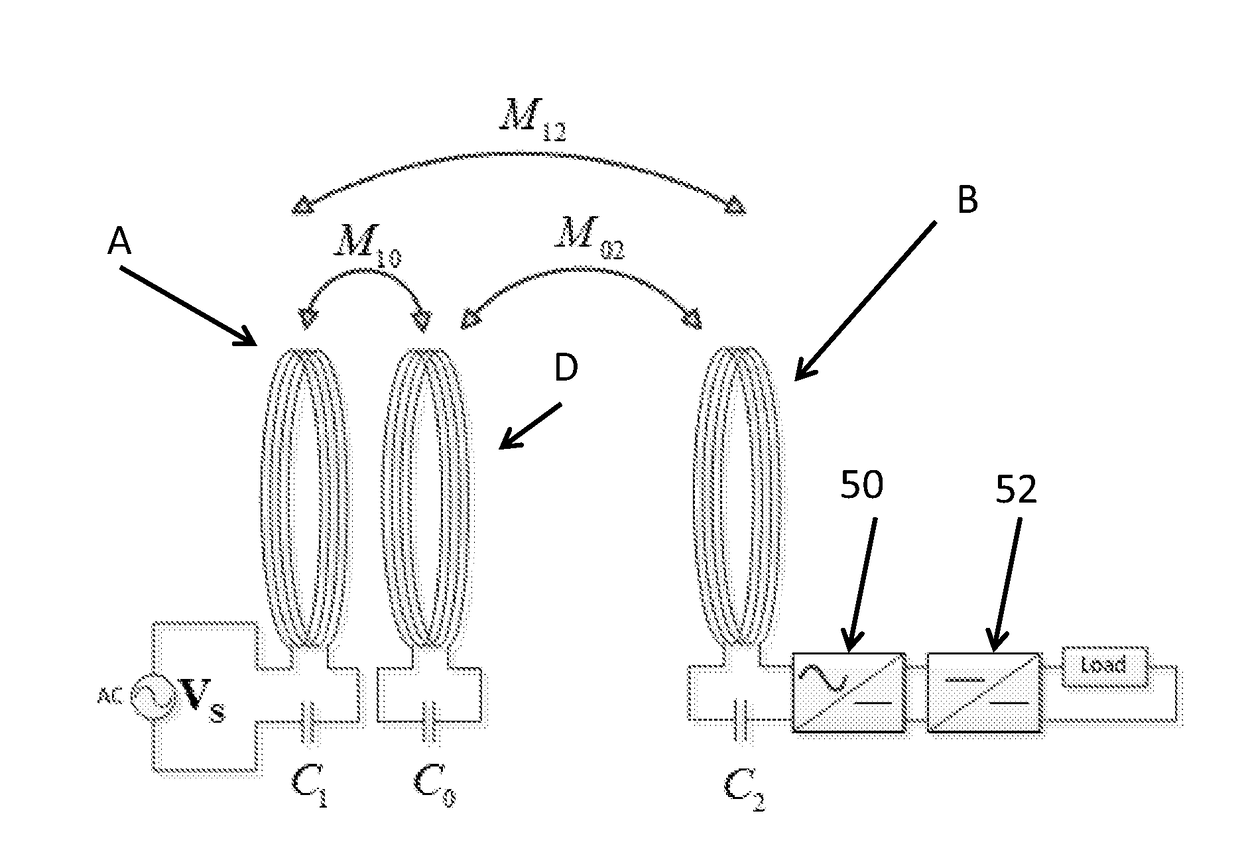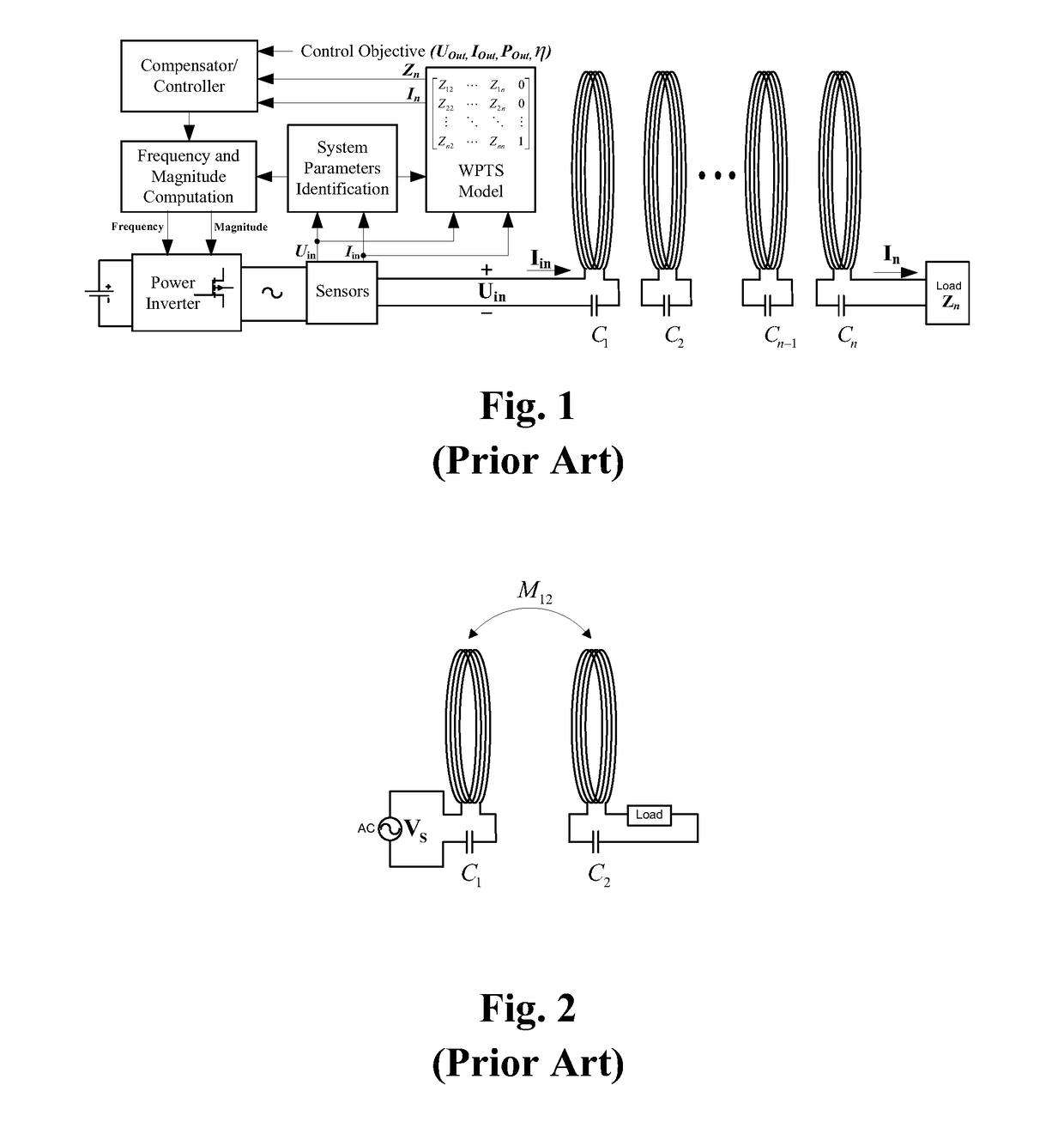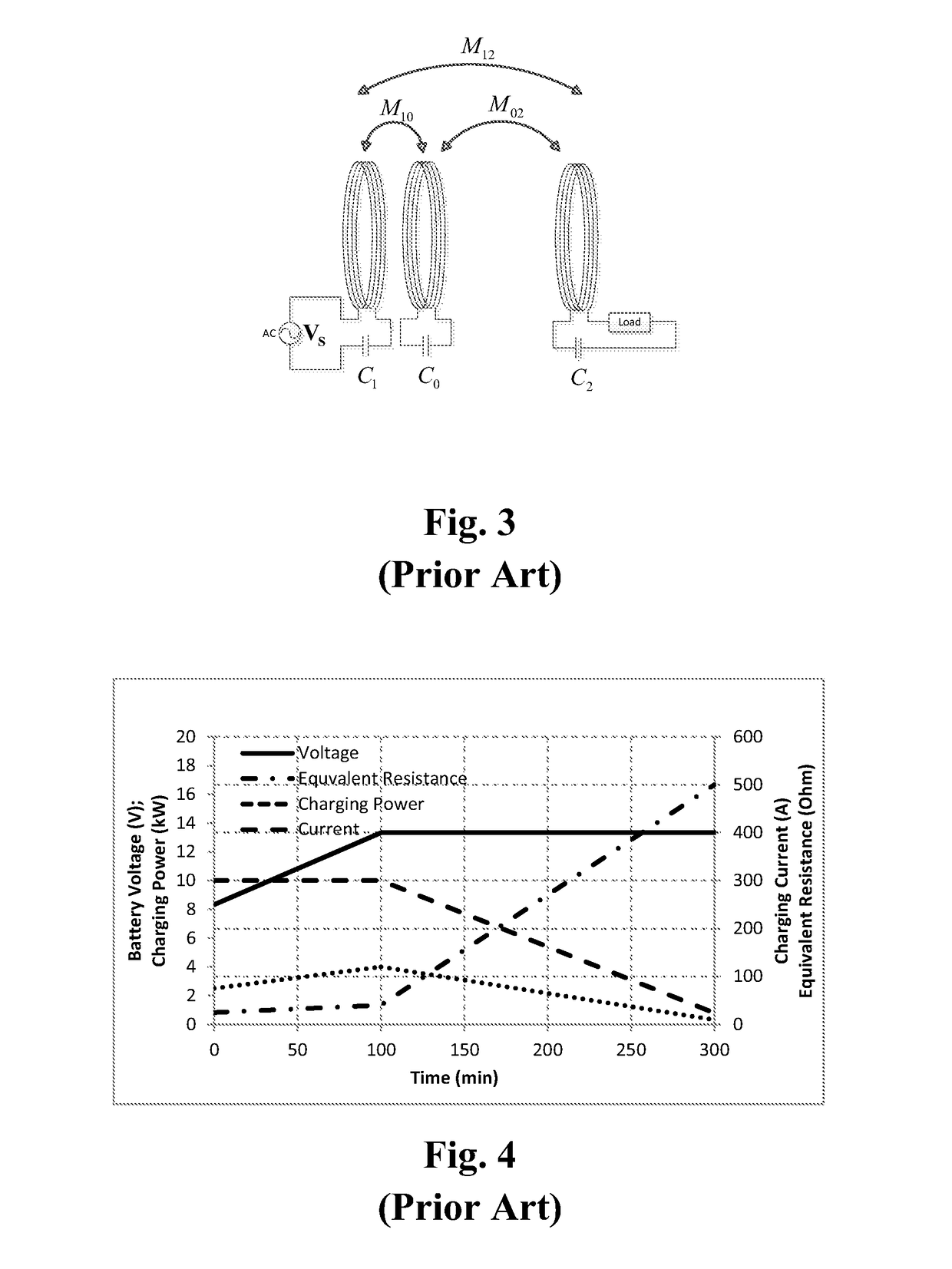Fast method for identifying coil misalignment/mutualcoupling in wireless charging systems
a wireless charging and mutual coupling technology, applied in the direction of transmission, electrical equipment, batteries circuit arrangements, etc., can solve the problems of increasing the cost and overall complexity of the system, difficulty in identifying coil misalignment, and limited alignment, so as to reduce the mutual inductance between coils and achieve the effect of rapid calculation of coil misalignmen
- Summary
- Abstract
- Description
- Claims
- Application Information
AI Technical Summary
Benefits of technology
Problems solved by technology
Method used
Image
Examples
Embodiment Construction
[0028]The proposed method of the present invention may be explained with the use of a 2-coil wireless power transfer system as shown in FIG. 2 and a 3-coil system which has a relay resonator between the transmitter coil and the receiver coil as shown in FIG. 3. The advantage of using a 3-coil system can be found in reference: W. X. Zhong et al., “A Methodology for Making a Three-Coil Wireless Power Transfer System More Energy Efficient Than a Two-Coil Counterpart for Extended Transfer Distance”, IEEE Transactions on Power Electronics, vol. 30, pp. 933-942, 2015 (the “Zhong 2015 article 1”).
[0029]The descriptions given below are based on wireless charging of electric vehicles (EV). However, it should be noted that the proposed method is also applicable to other wireless charging systems.
[0030]There are numerous publications on wireless charging of electric vehicles. Examples are: J. G. Hayes et al., “Wide-load-range resonant converter supplying the SAE J-1773 electric vehicle inducti...
PUM
 Login to View More
Login to View More Abstract
Description
Claims
Application Information
 Login to View More
Login to View More - R&D
- Intellectual Property
- Life Sciences
- Materials
- Tech Scout
- Unparalleled Data Quality
- Higher Quality Content
- 60% Fewer Hallucinations
Browse by: Latest US Patents, China's latest patents, Technical Efficacy Thesaurus, Application Domain, Technology Topic, Popular Technical Reports.
© 2025 PatSnap. All rights reserved.Legal|Privacy policy|Modern Slavery Act Transparency Statement|Sitemap|About US| Contact US: help@patsnap.com



